Disclosure: This article contains affiliate links. We may earn a commission from purchases at no extra cost to you, which helps our travel content.
The coastal breeze of Annaba whispered tales of Phoenician traders as I stood at the port, mapping my journey inland to Constantine. After three decades helping others resettle across borders, I've developed a sixth sense for transportation networks in challenging regions. Northern Algeria presents a fascinating puzzle of colonial-era railways, efficient shared taxis, and local buses that, once deciphered, reveal an accessible adventure through one of North Africa's most underrated regions. This spring marked my second Algerian sojourn, and I'm eager to share the transportation wisdom gleaned from navigating this remarkable stretch of Mediterranean coastline to the dramatic gorges of Constantine.
Understanding Your Transportation Options
Northern Algeria offers three primary transportation modes between Annaba and Constantine: trains, louages (shared taxis), and public buses. Each option presents its own rhythm and character, much like the varied theatrical productions I've sought out across Eastern Europe.
The train service, operated by SNTF (Société Nationale des Transports Ferroviaires), provides the most comfortable experience. Two daily departures connect these cities, with the journey taking approximately 2.5 hours through stunning countryside. The morning train departs around 6:30 AM, while the afternoon service leaves at 2:45 PM. Tickets cost roughly 500-600 DZD (about $3.50-4.50 USD) for second class and 700-800 DZD ($5-6 USD) for first class.
Louages, Algeria's ubiquitous shared taxis, operate from stations on the outskirts of both cities. These Mercedes sedans or Peugeot vans depart when full (typically 6-7 passengers) and offer the fastest transit time at approximately 1.5-2 hours. Expect to pay 600-800 DZD ($4.50-6 USD) per person.
Public buses provide the most economical option at 300-400 DZD ($2-3 USD), but journeys can stretch to 3+ hours with frequent stops. The digital translator I carried proved invaluable for deciphering schedules and negotiating fares at stations where English is rarely spoken.

💡 Pro Tips
- Purchase train tickets at least one day in advance during peak season (April-May)
- Arrive at louage stations before 10 AM to ensure same-day departure
- For buses, keep small denominations of dinars ready as drivers rarely provide change
The Railway Experience: SNTF Trains
My preference for train travel stems partly from nostalgia—my father often recounted tales of Pakistan's grand railway journeys—but mostly from the practical benefits of Algeria's surprisingly well-maintained rail system. The Annaba-Constantine route showcases both coastal views and dramatic inland landscapes through large windows that invite contemplation.
First class carriages offer assigned seating, air conditioning, and a generally quieter atmosphere worth the modest price difference. Second class remains perfectly comfortable but can become crowded on weekend departures. Neither class offers onboard refreshments, so I packed my trusty insulated water bottle which kept mint tea hot throughout the journey.
The railway stations themselves deserve mention. Annaba's station retains its French colonial architecture, complete with dramatic arched ceilings and intricate tilework. Constantine's station, renovated in 2015, blends modern amenities with historical elements. Both feature basic waiting areas, ticket counters, and small cafés selling coffee and pastries.
Ticket purchase requires patience and basic French or Arabic phrases. While online booking exists through the SNTF website, foreign credit cards are rarely accepted, making in-person purchase necessary. I arrived 45 minutes before departure to navigate this process comfortably.
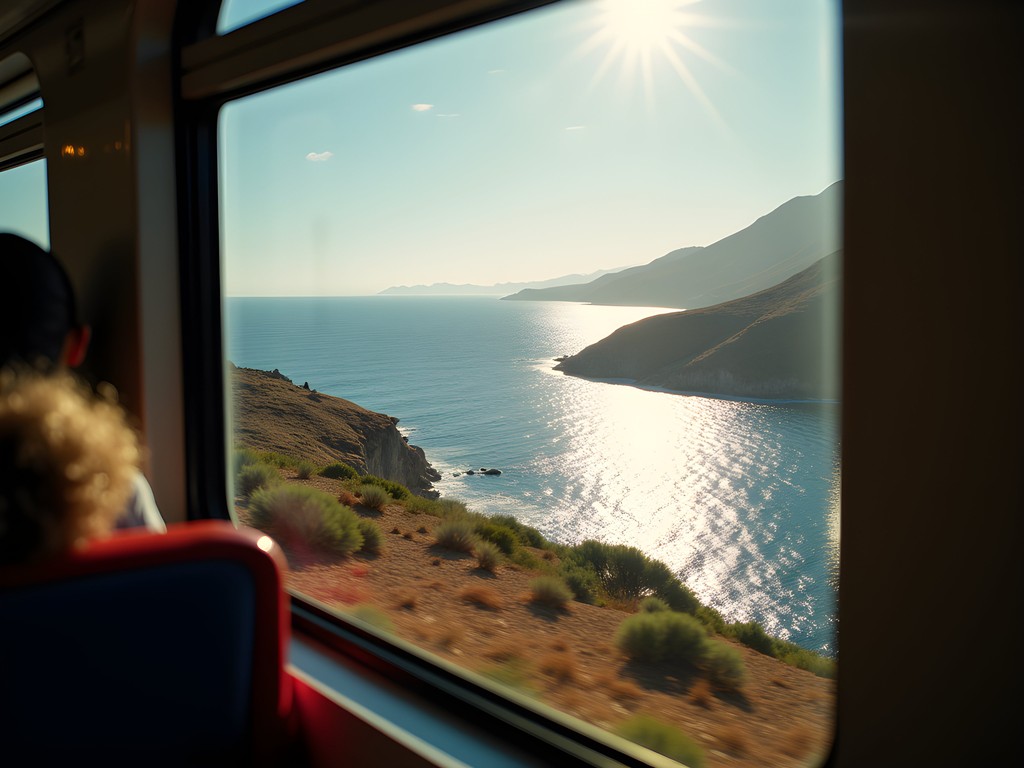
💡 Pro Tips
- Download the SNTF app for schedule updates, though ticket purchase typically requires in-person payment
- First class tickets offer significantly more comfort for just $1-2 more
- Bring your passport when purchasing tickets as ID is sometimes required
Louages: The Local's Choice
After my first Algerian train journey, I was determined to experience transportation like a local. Enter the louage system—a fascinating network of shared taxis that forms the backbone of intercity travel throughout North Africa. While initially intimidating to newcomers, this system offers unmatched flexibility and cultural immersion.
In Annaba, the main louage station for Constantine-bound vehicles is located near Pont Blanc, about 3km from the city center. A local city bus (fare: 20 DZD) or taxi (250-300 DZD) will get you there. The station operates from approximately 6 AM until the last vehicle fills, typically around 6 PM.
The process works simply: find the row of vehicles headed to Constantine (look for signs or ask for "Constantine"), then either join a partially filled vehicle or wait for the next empty one. Payment is made directly to the driver before departure. The money belt I wore beneath my shirt proved perfect for storing larger denominations while keeping smaller bills accessible for quick transactions.
The social dynamics of louage travel fascinate me. Passengers often share food, engage in lively debates about politics or football, and collectively negotiate music choices. As a solo traveler with basic French and minimal Arabic, I found these journeys provided my most authentic connections with everyday Algerians. One driver, learning of my interest in craft brewing, detoured briefly to show me a local date wine operation—an unexpected highlight of my journey.
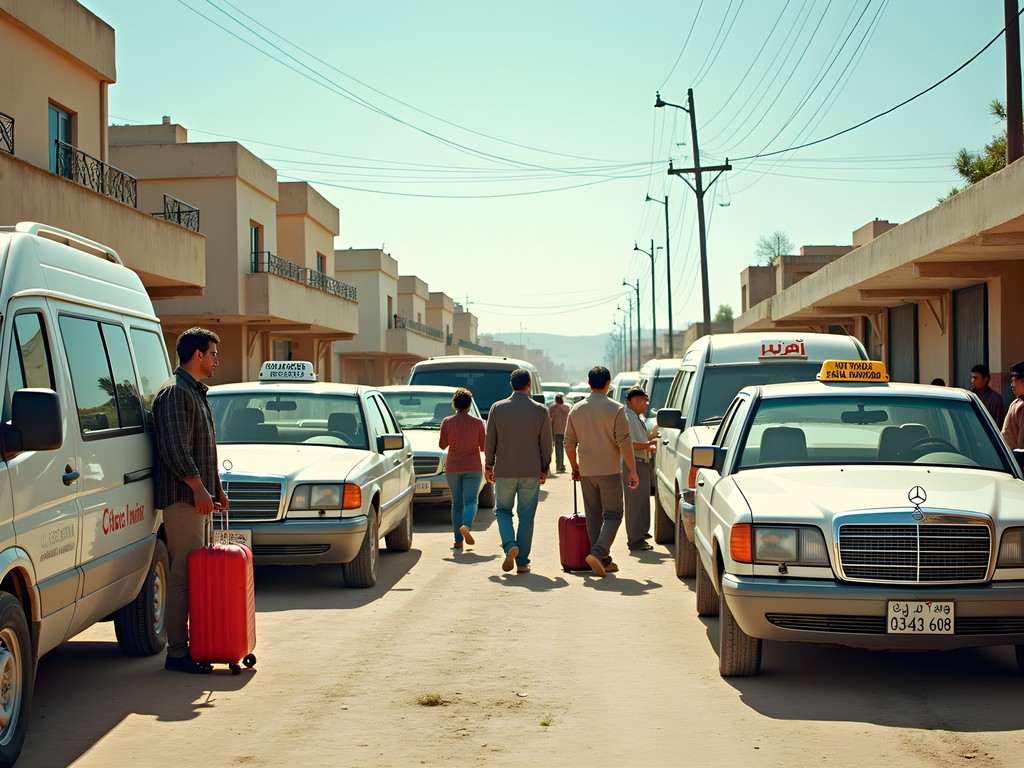
💡 Pro Tips
- Confirm the exact fare before entering the louage to avoid confusion
- Front seats cost slightly more (100-200 DZD extra) but offer better views and more space
- Keep valuables secure but accessible, as you'll need to present identification at security checkpoints
Bus Travel: Budget-Friendly but Time-Consuming
For travelers with more time than money, Algeria's intercity buses offer a window into everyday life. The Annaba-Constantine route is serviced by both government-operated SNTV buses and various private companies, with departures roughly every 90 minutes from 5:30 AM until 4:30 PM.
The main bus station in Annaba (Gare Routière) lies approximately 4km southwest of the city center. Constantine's station is similarly positioned at the city's edge. Both terminals feature basic amenities—toilets, small food kiosks, and ticket counters. Tickets can be purchased on the day of travel, though morning departures often sell out by 9 AM.
Bus quality varies dramatically. Newer vehicles offer air conditioning, reclining seats, and sometimes WiFi, while older models provide a more... authentic experience. I recommend bringing along a travel pillow for comfort during the frequent stops that extend journey times.
What buses lack in speed, they compensate for in cultural immersion and scenery. Routes between Annaba and Constantine traverse small villages and agricultural areas rarely seen by tourists. On my spring journey, wildflowers carpeted hillsides while shepherds guided flocks through ancient landscapes—scenes reminiscent of my childhood visits to Pakistan's countryside.
The deliberate pace of bus travel aligns perfectly with my post-retirement philosophy: the journey itself matters as much as the destination. After decades of managing time-sensitive refugee resettlements, I've embraced slower travel as a form of meditation—one that pairs nicely with the portable chess set I carry for impromptu games with fellow passengers.
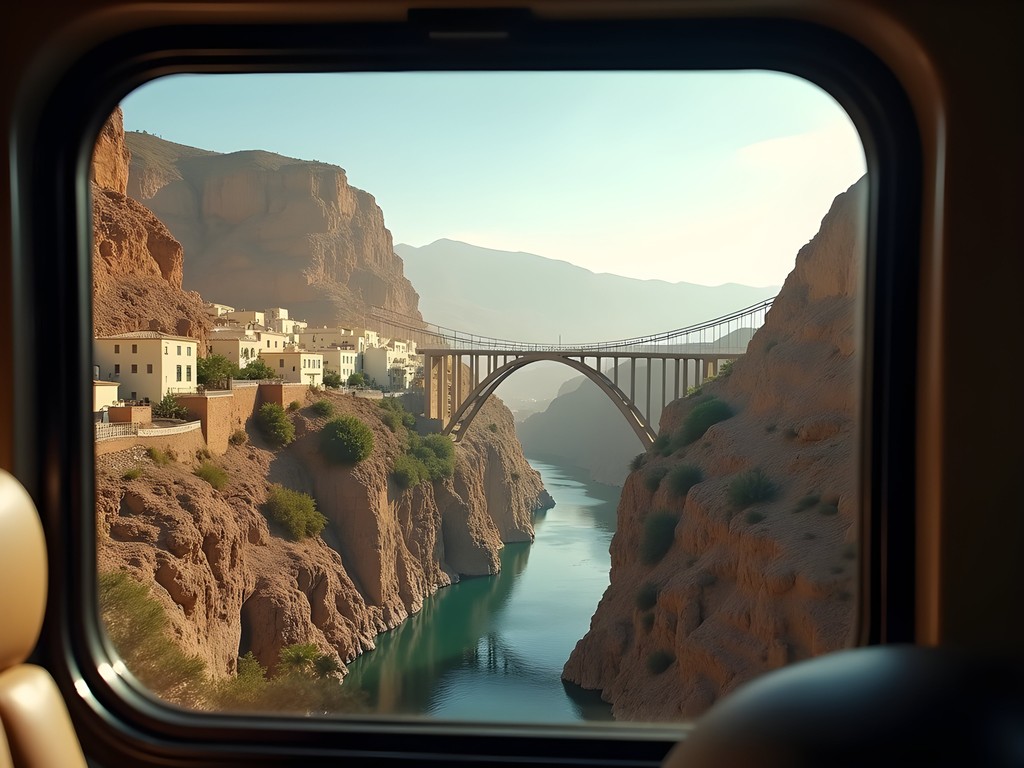
💡 Pro Tips
- Confirm that your bus is direct; some routes require transfers in smaller towns
- Download offline maps as many buses lack announcements for stops
- Choose seats on the right side (heading to Constantine) for the best mountain views
Navigating Security Checkpoints
A crucial aspect of Algerian travel rarely mentioned in guidebooks is the omnipresence of security checkpoints along major routes. These barrages routinely stop vehicles to verify passengers' identification and occasionally search luggage. As someone who spent decades helping refugees navigate bureaucratic systems, I approach these interactions with practiced patience.
All travelers should carry passports and any relevant visas or permits. Photocopies won't suffice at these checkpoints. Officers typically speak Arabic and French, with limited English. My strategy involves keeping essential documents in a slim travel document organizer that I can quickly produce when needed.
Checkpoint procedures follow a predictable pattern: vehicles slow or stop, an officer reviews identification, occasionally asks basic questions about travel purposes, and then waves you through. The process rarely exceeds five minutes per checkpoint, but multiplied across 3-4 stops between Annaba and Constantine, it adds meaningful time to journeys.
Foreign travelers receive particular attention but generally experience professional treatment. During my spring journey, one officer, noticing my Canadian residence, enthusiastically discussed his cousin in Montreal before recommending a little-known Roman ruin near our route. These unexpected exchanges often provide valuable local insights unavailable through conventional tourism channels.
While photography is strictly prohibited at checkpoints (a rule enforced with particular seriousness), the security presence actually contributes to Algeria's standing as one of North Africa's safest destinations for solo travelers. Understanding and respecting these procedures transforms what some might view as an inconvenience into an interesting facet of contemporary Algerian society.
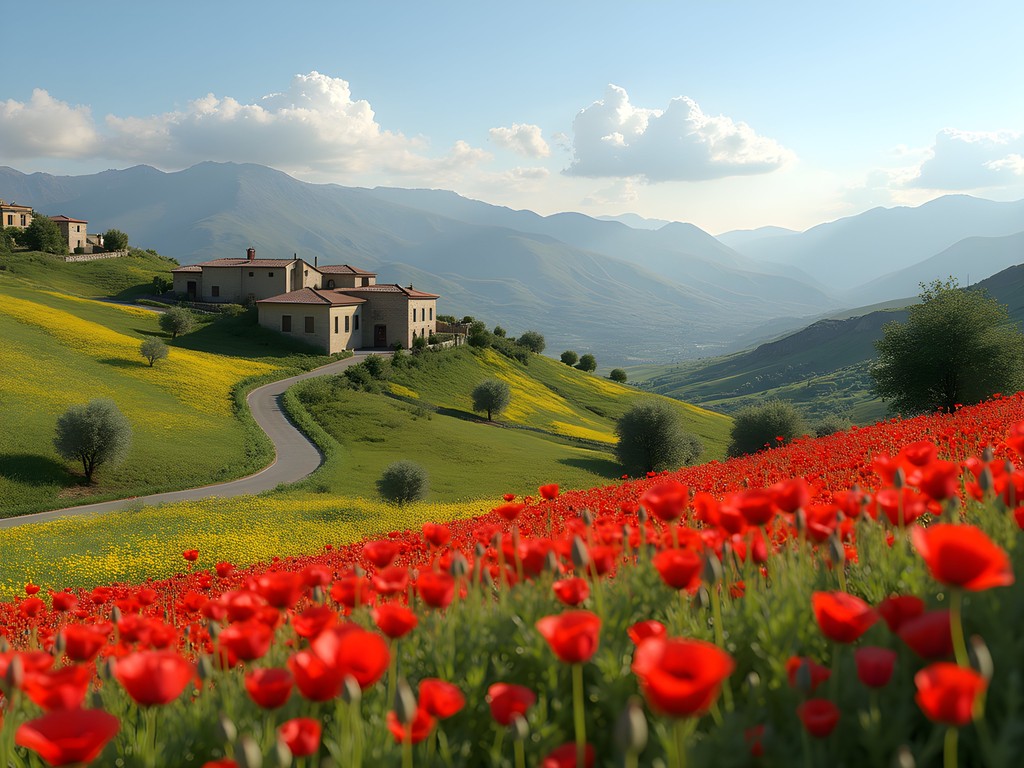
💡 Pro Tips
- Keep your passport easily accessible rather than buried in luggage
- Respond to officers' questions clearly but concisely
- Avoid using phones when approaching checkpoints as this can create suspicion
Final Thoughts
As I stood on Constantine's Sidi M'Cid suspension bridge, watching swallows dive through the dramatic gorge below, I reflected on how the journey from Annaba had revealed Algeria's character far more intimately than any guidebook could convey. Each transportation mode offers a different perspective: trains provide comfort and contemplation, louages deliver efficiency and social connection, while buses unveil the rural heartland at a pace that allows genuine absorption.
For the independent traveler willing to navigate beyond the conventional tourist infrastructure, this 150km stretch between Mediterranean port and mountain citadel offers a masterclass in North African travel. The transportation systems themselves become cultural experiences—windows into a society balancing tradition and modernity with remarkable grace.
Whether you're a fellow fifty-something rediscovering adventure or a younger soul seeking authenticity, I encourage you to embrace Algeria's transportation tapestry with open curiosity. Pack patience alongside your passport, learn a few Arabic phrases, and prepare for journeys that transcend mere movement between points on a map. After all, in this remarkable corner of North Africa, getting there truly is half the adventure.
✨ Key Takeaways
- Trains offer the most comfortable experience but run only twice daily
- Louages (shared taxis) provide the fastest transit time and greatest cultural immersion
- Budget travelers should consider buses for economical transportation despite longer journey times
- Allow extra time for security checkpoints between major cities
- Spring travel offers the most comfortable temperatures and spectacular countryside views
📋 Practical Information
Best Time to Visit
March-May (spring) for moderate temperatures and wildflower blooms
Budget Estimate
$30-50 USD per day including transportation, budget accommodations, and meals
Recommended Duration
At least 2 weeks to explore both cities and surrounding areas
Difficulty Level
Challenging
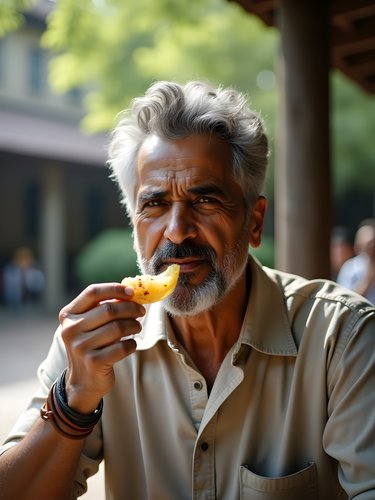
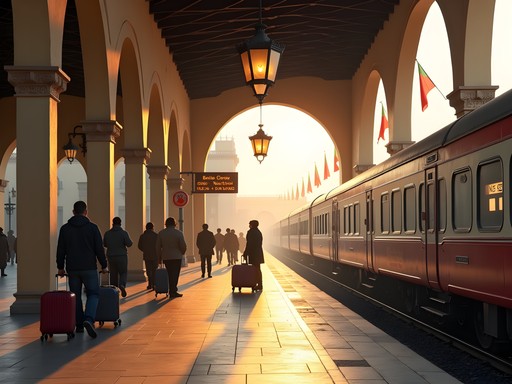
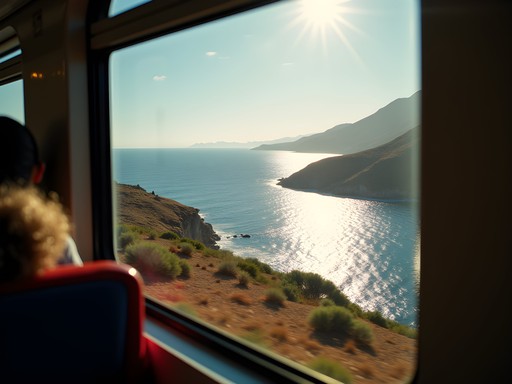

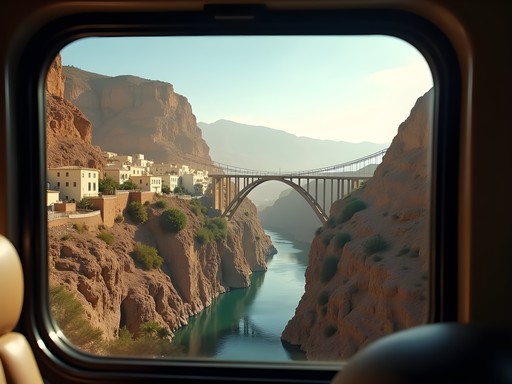
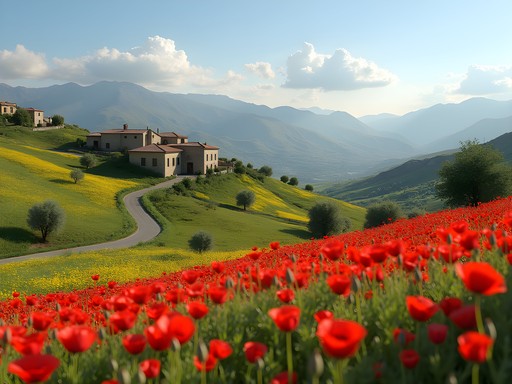


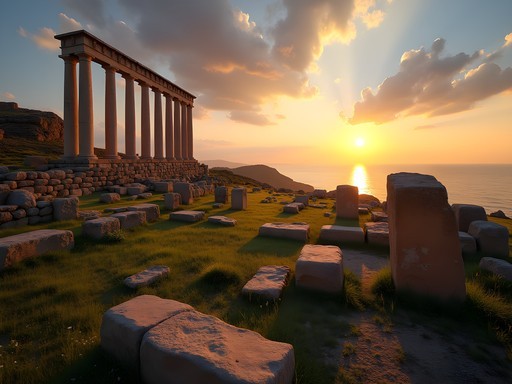




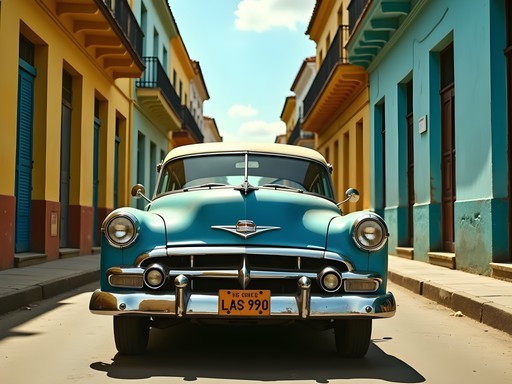

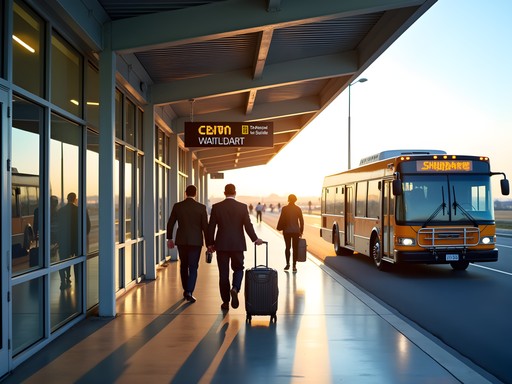
Comments
wanderrider
Just got back from this trip and wanted to add that the SNTF website was down when I tried to check schedules. I found that asking my hotel in Annaba to call the station for current times was the most reliable method. Also, bring water and snacks for the train - the café car was closed on my journey! The suspension bridges in Constantine are even more spectacular in person than in photos.
freeace
Thanks for the tip about the website! Did you feel the train was clean and comfortable?
wanderrider
Surprisingly clean! Seats were a bit worn but comfortable enough for the journey. Air conditioning was working well too, which was crucial in September heat.
waveblogger8574
Thanks for this guide! I'm planning to visit Algeria next spring and was wondering about the time difference between trains and louages. Is it really worth saving an hour with the louage or is the train more comfortable for the scenery?
Chase Khan
If you're not in a rush, definitely take the train for the scenery! The eastern route has some beautiful mountain views. The louage is faster but more cramped, and you'll be focused on the road rather than the landscape.
Sophia Gomez
Chase, your post brought back so many memories! I did this exact journey last year while on a business trip to Algeria. The train was surprisingly comfortable, though I wish I'd known about the food situation beforehand. Ended up hungry until reaching Constantine! One tip for business travelers: the first-class carriage on the train has power outlets that actually work, which was a lifesaver for getting work done. The dramatic approach into Constantine with those bridges and gorges visible from the train window made for the perfect Zoom background during a call - my colleagues were jealous! I found having my pocket translator incredibly helpful for communicating with locals, especially when trying to find the right louage stand.
freeace
Do you need to book the SNTF trains in advance or can you just show up?
wanderrider
Not Chase, but I did this route last year. You can buy tickets at the station, but I'd recommend getting there 30-45 mins early. The morning trains fill up quickly!
Chase Khan
Exactly what wanderrider said! Same-day tickets are usually available, but earlier trains can sell out, especially on weekends.
winterchamp
Great guide! How safe would you say the louages are for solo travelers? I've heard mixed things about shared taxis in North Africa.
Chase Khan
Thanks for asking! I found louages perfectly safe as a solo traveler. The key is to only use official stations and travel during daylight hours. Drivers are professionals who make this route regularly. Just keep valuables close as you would anywhere.
winterchamp
That's reassuring, thanks Chase! Will definitely give them a try next month.
waveperson2182
Just completed this route last week! Your timing estimates for the louages were spot on. One thing I'd mention - the train schedule changed recently, with an earlier morning departure from Annaba (7:15am instead of 8:00am). The station staff were super helpful despite my terrible French. Constantine was everything you described and more!
wanderluststar
Pro tip for anyone taking the bus: sit on the right side heading to Constantine for the best views as you approach the city. The dramatic gorge comes into view and it's absolutely spectacular!
starexplorer
Thanks for this tip! Just booked my bus tickets yesterday, will definitely remember this!
Ahmed Greene
Chase, this brought back memories of my journey through northern Algeria last spring! The louage experience was exactly as you described - a bit chaotic but deeply authentic. One tip for fellow travelers: bring small bills for louages as drivers rarely have change. Also, I found having my route mapped offline was essential since cell service can be spotty between cities. I used offline maps which saved me multiple times, especially when trying to find my way back to stations in unfamiliar cities. That suspension bridge in Constantine truly is breathtaking - I spent nearly an hour just watching the light change over the gorge at sunset.
explorewalker163
Is there a direct bus from Constantine to Timgad ruins? Or would you recommend hiring a driver?
globeguy
Anyone know if it's possible to buy train tickets online or through an app? Or is it station-only?
Ahmed Greene
Last time I was there (early 2025), you could only buy at stations or through local travel agencies. The SNTF website sometimes shows schedules but doesn't have e-ticketing. I'd recommend getting tickets a day in advance if possible, especially for weekend travel.
Venture X
Premium card with 2X miles, $300 travel credit, Priority Pass